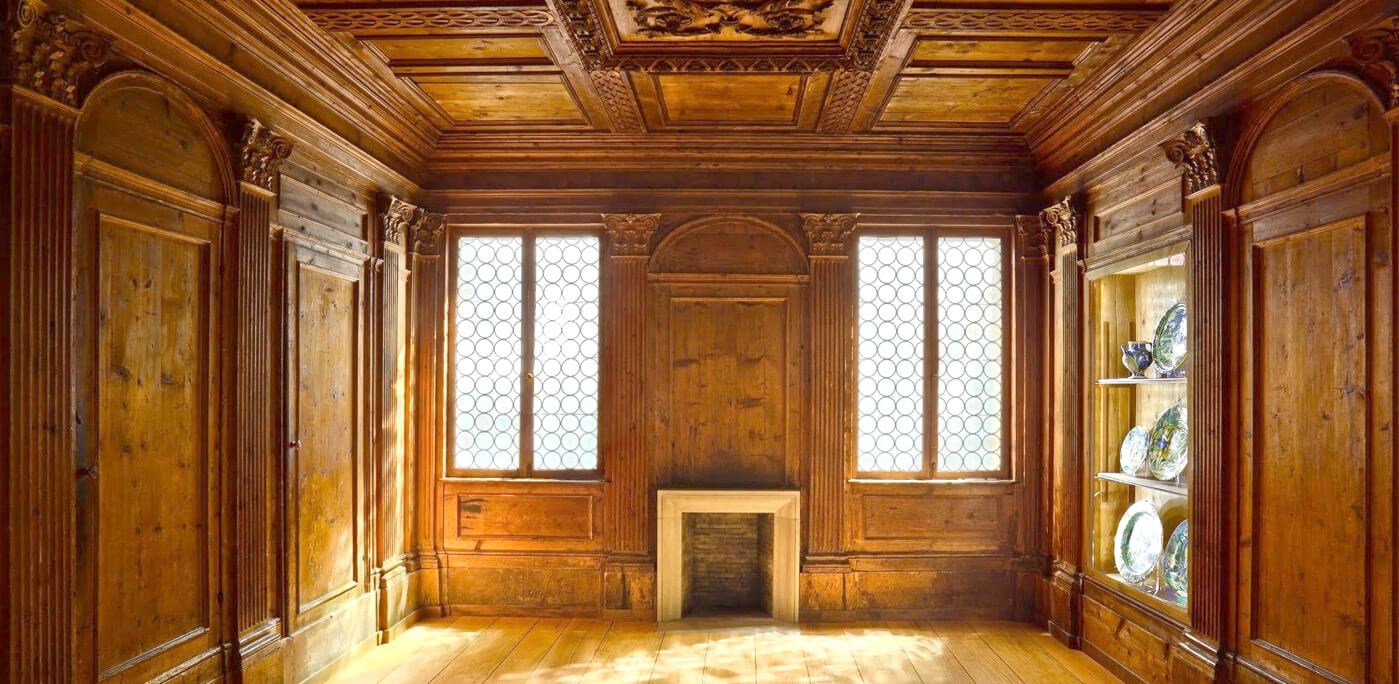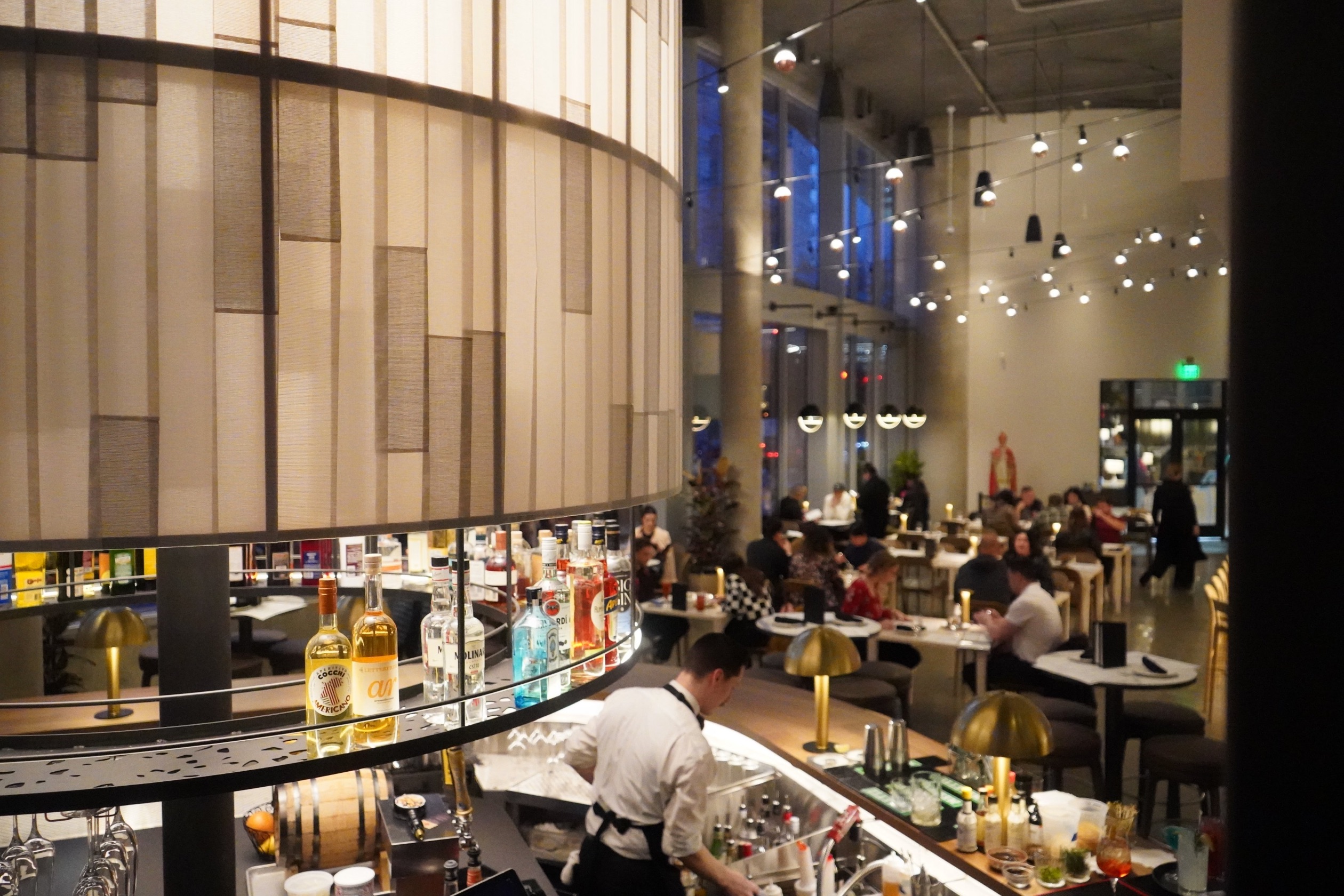It may look as though the French have taken over the Seattle Art Museum this fall, as the museum hosts a lavish exhibit on designer Yves Saint Laurent, but persevere and you can still experience a bit of Italy during your next visit.
Take the escalator to the fourth floor, head to the north corner, and wind your way through galleries that feature ancient Mediterranean and Islamic art. In a small room just beyond, you’ll be transported back in time more than four centuries to a stunning, wood-paneled great room built for a nobleman in the northern Italian town of Chiavenna, nestled in the shadow of the Alps.
Called simply the Italian Room, it is one of the oldest wood-paneled rooms in the United States, according to Julie Emerson, SAM’s former curator of decorative arts. Constructed between 1575 and 1600 in spruce, willow and fir, this lovely room, called a “stua” in the local dialect, would have been set inside a stone building and include a large stone or tile-covered stove to provide a warm gathering spot for the family on cold winter nights.
But don’t let this somewhat pedestrian function fool you. The warm glow of the wood paneling, the richly carved ceiling and the fluted pilasters topped with classical capitals were all status symbols, proof beyond a doubt that this room was owned by a well-to-do Italian family. It’s possible that the original owner was a physician or had a connection with the medical field, surmised Emerson, because the ceiling medallion includes a carved representation of an apothecary jar.

“For about 350 years, the room stayed in its original house,” said Emerson. “Then in the 1920s, with the great depression in full swing throughout much of the world, people began selling their belongings. These kinds of wood-paneled rooms were in particular demand in the U.S., especially with people like John Pierpont Morgan and other wealthy collectors.”
An Italian art dealer, Renato Bacchi, bought the room, removed it and sold it, in boards, to Adolph Loewi, a German-born antiques dealer. “Loewi installed the room in a palazzo in Venice that served as his gallery,” said Emerson. “But in 1938, Loewi, who was Jewish, was persecuted by the Fascist government and had to flee Italy. Lucky for us, he fled with his amazing collection, first to Paris and then, the following year, to New York City.”
Eventually, Loewi found a buyer for the Italian Room, architect John Yeon, who installed it in his San Francisco flat. “Yeon was a well-known modernist architect whom I met in the 1980s,” said Emerson. “I had heard about the Italian Room but at that time, I had not seen it assembled. I only saw it in pieces, all 149 of them.”
Yeon died in 1994 but before the building was sold, his partner Richard Louis Brown saw to it that the Italian Room was saved. From his home in Portland, Ore., Brown set about finding a new home for the ornate Italian Room.
By a happy coincidence, SAM was planning a major expansion at its downtown location, and Brown agreed to donate the room in Yeon’s memory. During the conservation and installation process, visitors could stop by and see the work as it progressed. When the museum reopened in 2007, the Italian Room installation had been completed, recreating the exact angles and dimensions of the original setting.
At the time, Emerson noted, there were only two companies qualified to deal with installing such an historic treasure: one in New York and the other in France. “We hired the New York firm, Traditional Line, to install the room,” said Emerson. “It was a fabulous project. The wood panels were hung on a metal steel frame that looked like a huge erector set, using existing nail holes. It took months to complete.”
Each step of the room’s puzzle-like reconstruction was mapped, documented and recorded. “The conservation staff had to thoroughly clean all the wood panels, board by board,” said Emerson. “We found candle wax, fly specks, all the little marks the room had acquired during its centuries in Italy. It was a huge job to conserve it properly.”
The wood panels are remarkably intact and original. The windows, chestnut floor and stone fireplace were added later, based on historical Chiavenna designs and materials.
Chiavenna, a mountain town in Lombardy, lends its name to the valley―the Alpine Valchiavenna―surrounded on three sides by Switzerland. “In the 16th century, Chiavenna was an important customs station and trade center at the junction of two important passes, one going to St. Moritz and the other going northwest to France” said Emerson. “Our Italian Room reflects the French influence, very Northern in style. It’s clear this was a town with a lot of money.”
Today, the Chiavenna area is a veritable open-air museum, boasting an assortment of ornately decorated mansions, piazzas graced with beautiful fountains, and exceptional architecture.
For many of us, a trip to Chiavenna might not be possible. But it’s reassuring to know that we can experience some of the timeless beauty of that region with a quick trip downtown, where the warm glow of the wood-paneled Italian Room beckons us back to another era.
































